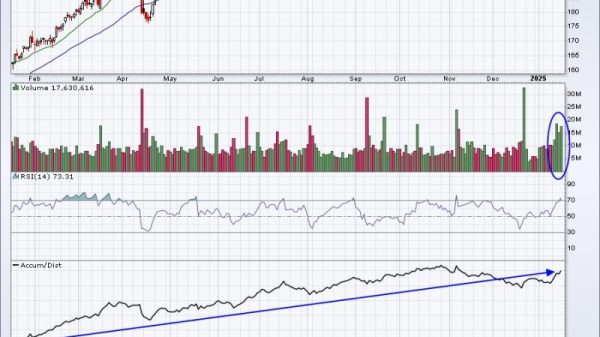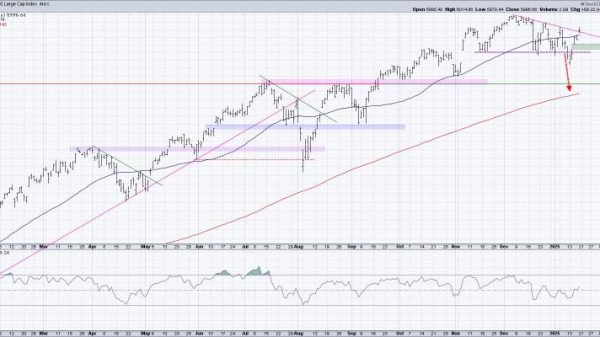China has taken a major step forward in its bid to create a rival to SpaceX’s Starlink this week by launching the first of what it hopes will be a constellation of 14,000 satellites beaming broadband internet coverage from space.
Eighteen satellites were blasted into low Earth orbit (LEO) on Tuesday in the inaugural launch for the government-backed Qianfan, or Spacesail, constellation, state media reported.
The constellation – hailed in domestic media as China’s answer to US-based SpaceX’s Starlink – aims to join a handful of planned or operational large-scale space projects from providers in various countries offering broadband satellite internet services.
Leading that pack is Starlink, which has more than 6,000 satellites in orbit and ambitions to expand to as many as 42,000. It is widely expected to remain the dominant player in years to come, given its head start and advanced launch capabilities.
While most people accessing the internet do so through cables and other ground-based infrastructure, satellite internet connection has emerged as an important service for rural, under-resourced and disaster-hit areas. It’s also seen as key for expanding technologies like autonomous cars and other internet-enabled devices – industries that China wants to lead.
Qianfan, also known as G60 Starlink, is among three planned Chinese mega constellations that could see the country’s firms launching nearly 40,000 satellites into low Earth orbit (defined as no more than 1,200 miles above the planet) in the coming years. So-called mega constellations refer to networks of hundreds or thousands of orbiting satellites.
The launch comes as China ramps up its commercial space sector as part of Beijing’s broader bid to cement its place as a dominant power in outer space. The country has already made tremendous strides in its ambitious national space program, which aims to put astronauts on the moon by 2030, while also launching military-linked satellites for navigation, communication and surveillance.
Controlling LEO broadband satellite constellations could be a boon for China, experts say, enabling its firms to offer services domestically and around the world – while bolstering Beijing’s diplomatic sway, control over data flow and national security.
The rollout of Qianfan, which is run by Shanghai government-backed Shanghai Spacecom Satellite Technology (SSST), will also be a test of China’s ability to produce and launch satellites at scale and on a tight timeline.
The constellation is slated to grow to more than 600 satellites by the end of 2025 with plans to reach more than 14,000 satellites providing broadband internet globally by 2030, according to state broadcaster CCTV.
That number would be “sufficient to provide coverage for most human population centers,” Zhu Xiaochen, deputy director of the project, told CCTV.
‘Informational superiority’
China’s foray into broadband mega-constellations comes as governments and companies across the world are increasingly eyeing satellites for everything from communications to military operations.
The war in Ukraine, where access to Starlink has been a key asset for the Ukrainian military, has also moved LEO broadband satellites into the spotlight for its security implications.
Chinese researchers have on several occasions raised national security concerns about the SpaceX-run constellation – including one military scholar who said in January that it had the potential to support US “ground forces” and strike capability in “regional conflicts.”
While the launch of Qianfan is part of Beijing’s broader push to boost space capabilities and commercial applications, its launch also shows China is “recognizing the dual use … potential of these capabilities from the standpoint of informational superiority or data flow control,” said Tomas Hrozensky, a senior researcher at the nonprofit think tank European Space Policy Institute in Vienna.
Constellations like Qianfan, once operational, could also yield diplomatic benefits for Beijing, experts say. For example, China could offer access to its internet and communications services as part of deals with governments within its Belt and Road Initiative, a global infrastructure scheme widely seen as a vehicle for China to build its overseas influence.
Chinese companies’ role in global telecommunications has been a fractious subject in recent years, with the US government raising alarms about alleged security risks for countries using ground-based Chinese infrastructure and equipment.
Some experts warn of related concerns if countries start getting online via Chinese satellites.
“As China begins deploying G60 and other planned LEO broadband constellations, we’ll see them extend their telecommunications model to space – a model based on surveilling and censoring the flow of information,” said Kari Bingen, director of the Aerospace Security Project at the Center for Strategic and International Studies (CSIS) in Washington.
‘A national priority’
The Qianfan constellation’s launch comes as China’s top leaders have signaled that developing the commercial space sector – including satellites, launch capabilities and tech production – is an economic priority.
The 18 satellites sent into orbit this week appears to put Qianfan ahead of two other planned Chinese communications constellations in LEO. State-owned China Satellite Network Group’s Guowang constellation project aims for nearly 13,000 satellites, and leading private space firm Landspace’s Honghu-3 has plans for 10,000, according to information released in state-linked media.
Plans for the Qianfan project were announced in 2021 as part of a state-backed technology innovation scheme across China’s prosperous Yangtze River delta. Its operating company, the Shanghai-government backed SSST, raised $933 million earlier this year, Reuters reported in February, citing an investor.
Preparing for the launch has included efforts to streamline satellite production, using what Qianfan’s chief designer Cao Caixia recently described to state broadcaster CCTV as “an intelligent satellite manufacturing platform” to speed up production times.
There are likely to be hurdles as SSST and other Chinese firms seek to rapidly scale-up their constellations. China is opening its first commercial launch pad this year, even as state media says roughly half of the satellites launched last year were commercial ones.
A number of Chinese companies are working to enhance launch capabilities, but those are still significantly behind the kind of technology powering SpaceX’s Starlink, which is expected to further expand its launch capacity once its Starship vehicle comes online.
“Like any spacefaring nation, China will undoubtedly encounter technical and operational challenges,” said CSIS’s Bingen, pointing to the need to establish and scale satellite production lines and launch rockets at a frequent cadence.
“But space is a national priority for Beijing, with these commercial entities receiving top-down support from the (Chinese Communist Party), large tracts of funding, municipal government support, and regulatory leeway, so I would expect China to continue its rapid progress in space.”


































